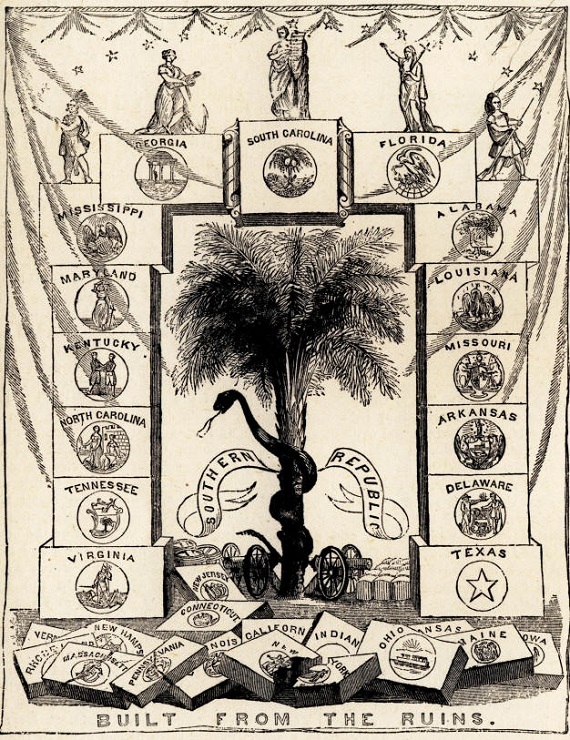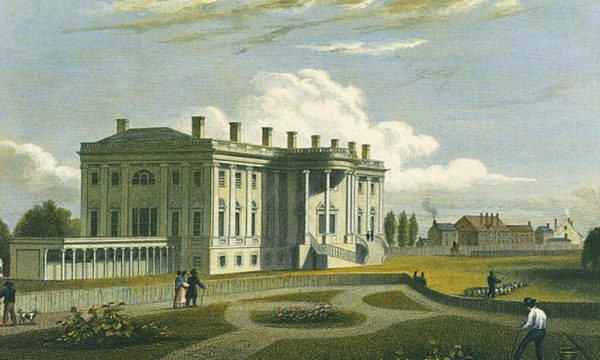
William Plumer Jacobs (1842-1917), a native of Yorkville, South Carolina, was a Presbyterian minister and scholar whose entire life has been called “a singular consecration to work and service in behalf of his fellow men.” He is closely identified with the town of Clinton, where he pastored a church and founded the Thornwell Orphanage and the Presbyterian College of South Carolina. Prior to entering the ministry, Jacobs served as a reporter for several publications. In late 1860, he was in Charleston, where he attended the Secession Convention, and in his diary, he recorded a vivid account of what happened there on the 20th of December. After noting the spread of smallpox in Columbia and the moving of the Convention to Charleston, he wrote the following in an entry that began on Wednesday, December 19:
On Wednesday nothing of much importance was done but
ever memorable will be the 20th day of December. At one o’clock Mr. Inglis introduced the ordinance of Secession. “An ordinance to dissolve the Union between the state of South Carolina and other states united with her under the compact entitled The Constitution of this United States of America. We, the people of the state of South Carolina in convention assembled do declare and ordain, and it is hereby declared and ordained that the ordinance adopted by us in convention, the 23rd day of May in the year of our Lord 1788 whereby the Constitution of the U.S. of America was ratified and also all acts or parts of acts of the General Assembly of this state ratifying amendments of this said Constitution are hereby repealed and that the Union now subsisting between South Carolina and other states under the name of the United States of America be hereby dissolved.”At seven minutes after
one the vote was taken on the ordinance. As name by name fell on the ear of the silent assembly the brief sound was echoed back without any exception in that whole body—aye! Scarcely had the President announced the vote unanimous before the people assemble without, sent up one universal shout of triumph and men and children ran from street to street, heralding the glad tidings. All the stores were closed, bands of soldiers were immediately parading and crowds were gathered everywhere to hear and tell the news. The Mercury extras were seized with an eagerness unparalleled in the annals of the Charleston press. At five thirty the convention again met and proceeded in a body to the Secession (Institute) Hall to ratify the ordinance. At the foot of thestairs they were joined by the Senate and House of Representatives and the three bodies took their seats … An oldgray headed man was brought forward to supplicate the throne of grace and Dr. Bachman poured his whole soul in it. The President then read the ordinance and when he finished it, the whole audience rose and gave tremendous applause. One by one the delegates went up and signed the ordinance and when the last name was added, President Jamison said “I do therefore declare South Carolina to be a separate, independent commonwealth,” every man,woman and child leaped up, hats flew high in air and cheer after cheer echoed and re-echoed from floor to roof, from side to side, until exhausted it fell down in one long, loud cadence of rejoicing.It was the noblest moment of my life. Even now while I write
,my blood thrills with excitement at the thought. The same scene was re-enacted in the street.
For anyone interested in learning more about the Secession Convention and its delegates, a great resource is the book South Carolina Secedes by John Amasa May and Joan Reynolds Faunt. Published in 1960, it includes the proceedings of the convention from December 17, 1860 through September 17, 1862, its reports,resolutions and ordinances, the “Declaration of Immediate Causes,” the “Address of the People of South Carolina,” and biographical sketches of all the signers.The book is dedicated to the signers “in reverence and in admiration for the courage of the men of 1860.”






